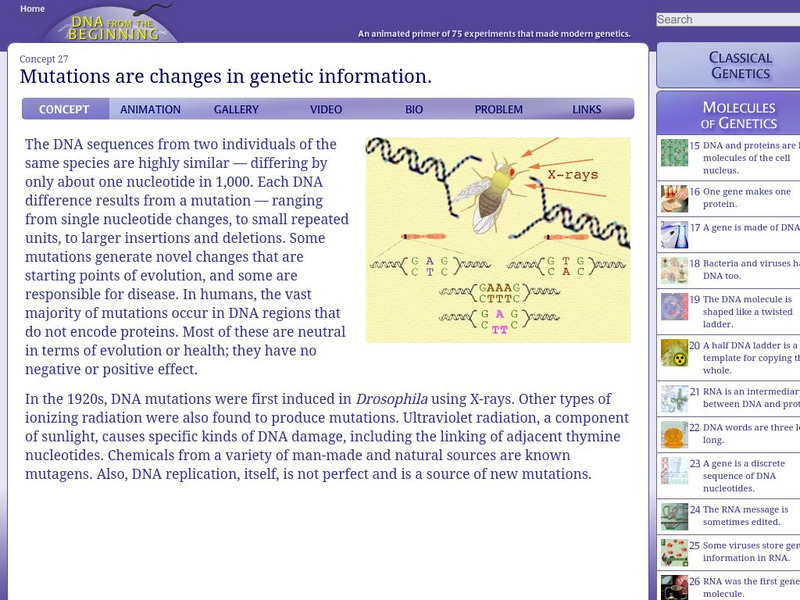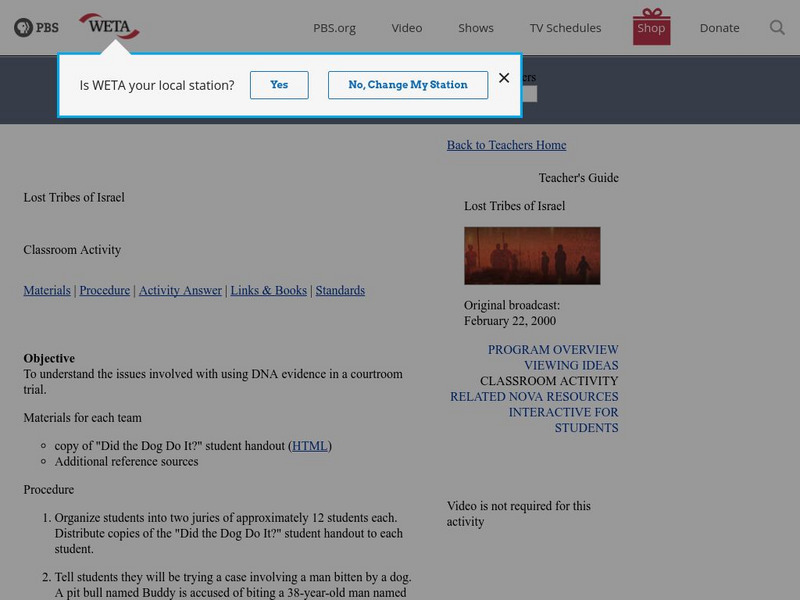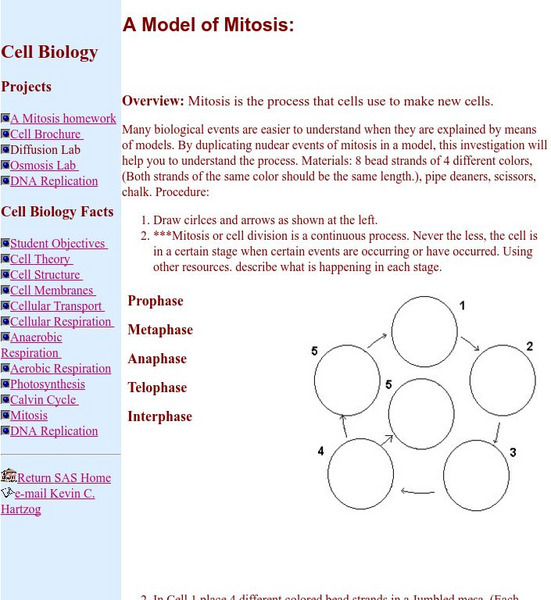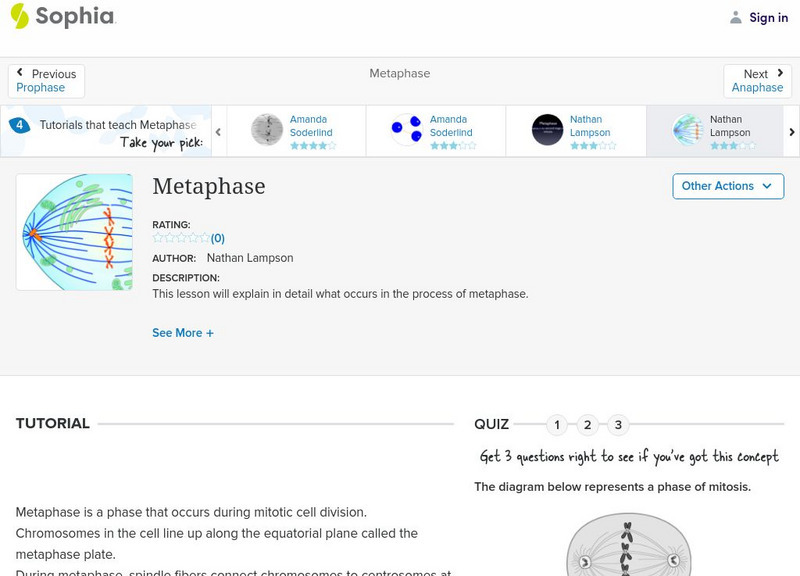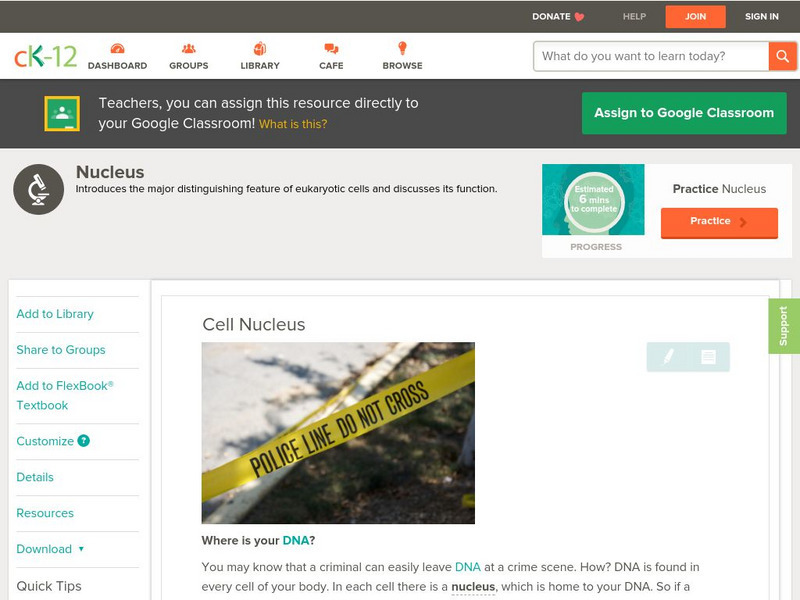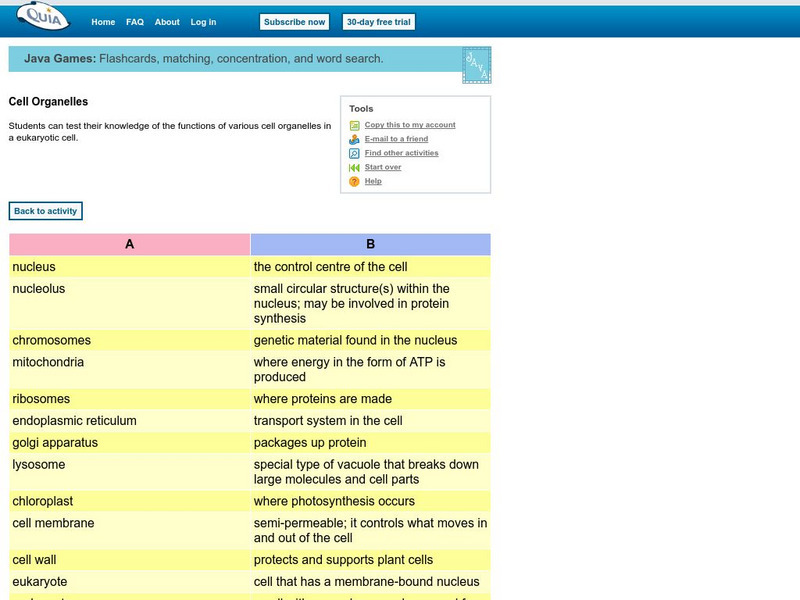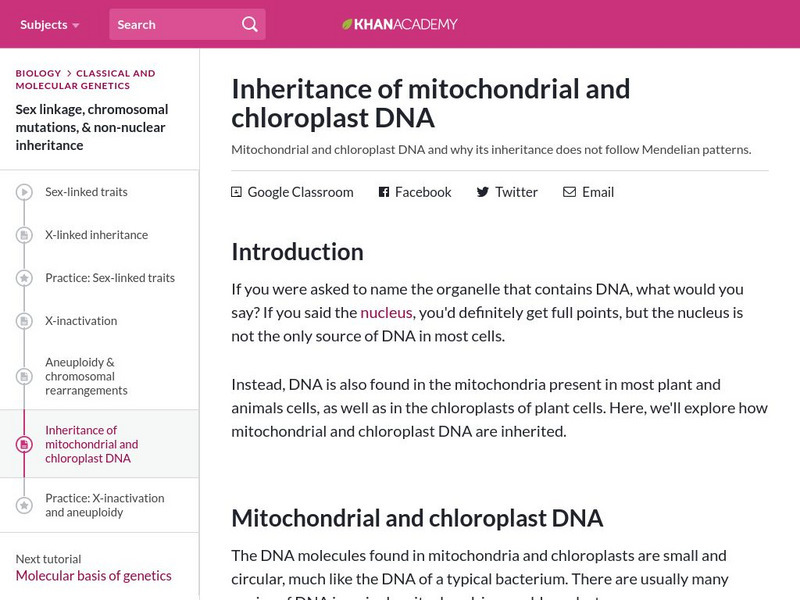Cold Spring Harbor Laboratory
Dna From the Beginning: Mutations Are Changes in Genetic Information
This article explains how and why mutations are so important to genetics.
Other
Ohio Department of Education: Cell Division and Differentiation
For this lesson, students use hands-on activities and journaling to learn about the process of mitosis, meiosis and cell differentiation. Hands-on activities include modeling of the mitosis and meiosis processes with model building and...
Curated OER
Smithsonian Institution Archives: Olive Swezy (B. 1878)
A zoologist who did much of her work at the Scripps Institute and University of California, Olive Swezy (b. 1878) was known for her work on the ovarian chromosome cycle. She attended University of California (B.S., 1913; M.S., 1914;...
Cold Spring Harbor Laboratory
Dna Interactive: Timeline
The history of the discovery and work with DNA is located in this totally interactive timeline. Parts of the timeline are displayed using short movies, animation and flash.
University of California
Cog Web: Can Matter Store Active Information?
This site provides a timeline of historical events in regards to discovery and research on genetics.
PBS
Pbs Teachers: Lost Tribes of Israel, Dna
Investigate how fingerprinting works, determine what sorts of evidence and questions are important in deciding a court case and understand the issues involved with using DNA evidence in a courtroom trial.
Other
A Model of Mitosis
Make a model of mitosis as a first step to understanding the process. A vocabulary list with clear definitions is included in this site.
University of Maryland
Univ. Of Maryland Baltimore Cty/biology Century
Historical perspective on Mendel's contribution. Spends a little time setting up what the current beliefs of Mendel's day were and how he changed things with what he did.
Sophia Learning
Sophia: Metaphase: Lesson 3
This lesson will explain in detail what occurs in the process of metaphase. It is 3 of 4 in the series titled "Metaphase."
Sophia Learning
Sophia: Metaphase: Lesson 4
This lesson will explain in detail what occurs in the process of metaphase. It is 4 of 4 in the series titled "Metaphase."
Sophia Learning
Sophia: Metaphase: Lesson 1
This lesson will explain in detail what occurs in the process of metaphase. It is 1 of 4 in the series titled "Metaphase."
CK-12 Foundation
Ck 12: Life Science: Cell Nucleus
[Free Registration/Login may be required to access all resource tools.] The nucleus is only found in eukaryotic cells. It contains most of the genetic material of the cell. It is surrounded by a double membrane, or nuclear envelope, that...
Howard Hughes Medical Institute
Hhmi: Bio Interactive: Structure and Function of Telomeres
Discover the cutting edge research going on with telomeres. Find out what they are, how they replicate and their role in the aging process.
BiologyWise
Biology Wise: Haploid Number Explained
Explains what the haploid number is and how it differs from a diploid number.
BiologyWise
Biology Wise: The Structure and Functions of a Cell Nucleus
The parts of a cell nucleus are described along with a list of the functions of a cell nucleus.
Khan Academy
Khan Academy: Inheritance of Mitochondrial and Chloroplast Dna
Find out about mitochondrial and chloroplast DNA, and why its inheritance does not follow Mendelian patterns.
Other popular searches
- Chromosome Mutations
- Chromosomes and Genes
- Chromosome Replication
- Dna, Genes & Chromosomes
- Chromosome Mapping
- Chromosome Structure
- Cell Division 23 Chromosomes
- Sex Chromosomes
- Chromosomes and Inheritance
- Genome Chromosomes
- Sex Linked Chromosomes
- Homologous Chromosomes


